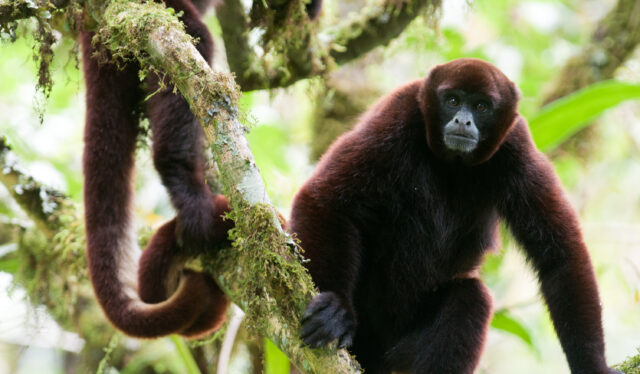College/University
TiME for Conservation Course Syllabus for Undergraduates
Encourage students to actively contribute to the preservation of biodiversity hotspots through informed decision-making and engagement
Download program
Time
200 min.
Syllabus
Objectives:
- To develop a profound understanding of fundamental terms in ecology and conservation biology
- To enhance writing and debating skills, specifically in the context of conservation biology
- To take meaningful initiatives to protect biodiversity hotspots through informed and persuasive decision-making
Required texts, materials or equipment:
- TiME website: www.this-is-my-earth.org
- IUCN website: https://www.iucnredlist.org
- BioData Base website: https://biodb.com
- at least 3 computers/laptops/tablets

Lesson Plan:
1. Introduction to the TiME Initiative
- 15 min: Lecture on species extinctions, emphasizing contemporary causes, particularly habitat loss.
- 10 min: Overview of the biodiversity hotspot concept and introduction to the TiME initiative.
2. Assigning Biodiversity Hotspot Lands
- 5 min: Class division into three groups (up to 4 members each) and assignment of lands from the TiME website (every year TiME uploads 3 privately owned lands in unprotected biodiversity hotspots that are candidates to become protected areas, once they are purchased by a local NGO with the financial support of TiME).
- Group members collaboratively define and compile essential terms related to ecology and conservation biology while analyzing the land they were assigned to.
3. Analyzing Assigned Lands: Geography, Biome, and Habitat
- 15 min: Students describe the geography and physical structure of their assigned land, identifying its biome and the degree of protection the biome holds. Students define the habitat type, its shape, how much edge effect it has, and whether it is fragmented.
- 30 min: Exploration of why the land is considered a biodiversity hotspot, identification of endangered species, and assessment of IUCN conservation statuses (CR, EN, VU, NT, CD, LC, DD). Assessment as to whether the species can serve as a flagship, umbrella, keystone, indicator, or economic species.
4. Long-Term Management and Ecosystem Services
- 30 min: Investigation into the land’s management plan, existing threats, potential expansion of disturbances, and motivations for protection.
- Discussion of ecosystem services provided by the protected land, both locally and globally. Can the land serve as a biological corridor?
5. Preparing Persuasive Presentations
- 40 min: Students summarize key points supporting their land’s significance and prepare a 5-minute persuasive presentation.
- Group representatives rehearse arguments for their land, focusing on the most compelling aspects.
6. Presentations and Class Discussion
- 20 min: Representatives present their persuasive arguments (5-minute limit), followed by 1-2 minutes of questions from classmates.
- 15 min: Class discussion about the presented lands and a vote (excluding voting for their own lands).
7. Consolidating Definitions and Optional Real-World Engagement
- 20 min: Each group proposes definitions for essential terms, culminating in final definitions agreed upon by the class.
- Optional activity: Encourage students to actively participate on the TiME website through voting and potential fundraising.
Note: This syllabus is subject to adjustments based on class dynamics and learning progress.
For more information, useful links, and anything else you’d like to discuss with TiME, please write to [email protected]